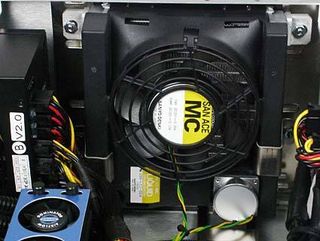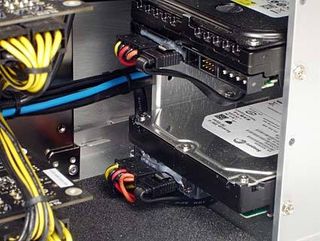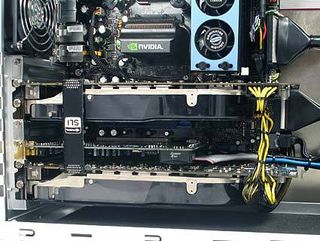Overindulge Yourself with QX6800
Mach V By Falcon Northwest

Falcon Northwest in not a newcomer to reviews here at Tom's Hardware. Being one of the oldest (if not the oldest) and most established boutique system builders in North America, Falcon Northwest is always on the cutting edge of technology. It is not uncommon to know that they are testing the latest hardware and devices for their systems. We have seen everything from processors, graphics cards, and even physics cards in systems from Falcon Northwest. While the processor and motherboard were preproduction for the Mach V, the rest of the components in the case were a "standard" Falcon build.

The CPU cooler has been around for over two years, but it still provides more than adequate cooling for even Intel's little monster. In fact, Falcon Northwest was able to push their processor further than the Biohazard Armageddon. A newer addition is Corsair's latest Dominator CM2X-1024-10000C5D memory, rated for 1250 MHz. While this memory is fast, Falcon decided to run the memory slower than the maximum speed but with tighter timings. We have charts on the following pages to show some of the core settings and configurations for each machine.

Several tried and true build methods were incorporated into the latest Mach V. One of these is the use of an adhesive (hot glue or silicon) to keep the cables in place even if the transportation carrier "manhandles" the shipment. Another innovation is the choice of shipping container. I was impressed to see the Armageddon system from Biohazard come in a Benson Box - they are expensive, but can get your goods from point A to point B with some serious armor.
Falcon also changed its packaging. The new cardboard container has a special polymer suspension system, where the polymer is basically stretched across an opening in a header and bottom bracket. These act as a set of "trampolines", allowing the system to hover in the middle of the container. This does two things. First, it can absorb shocks from being dropped or bounced in the back of a truck. Second, it keeps the system 3-4 inches away from the side of the box so it can sustain an impact from any side.

Stay on the Cutting Edge
Join the experts who read Tom's Hardware for the inside track on enthusiast PC tech news — and have for over 25 years. We'll send breaking news and in-depth reviews of CPUs, GPUs, AI, maker hardware and more straight to your inbox.
Current page: Mach V By Falcon Northwest
Prev Page Final Production Changes For The Armageddon Next Page System SettingsMost Popular


